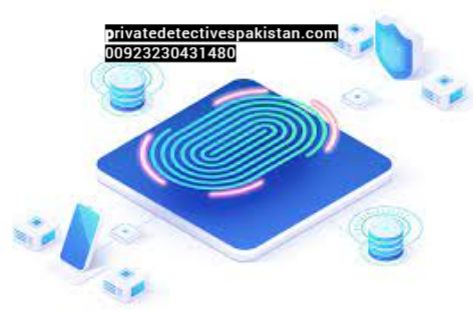DIGITAL EVIDENCE AFTER THE CRIME SCENE: The private detectives Pakistan or private detective in Lahore or private detective in Karachi says that Digital evidence is evidence that is taken from mobile phones, SIM cards, laptops, and other electronic devices, as well as video and audio devices. It is stated that the Qanoon e Shahadat Ordinance (QSO), Art.164 states that data can be extracted from modern technology. educated and equipped to gather packages, identify, and move physical evidence from the scene of the crime. However, these specialists might not be always available, and not all situations need their assistance. Therefore, it is essential that the IO is aware of how to gather packaging and label, store, and transport evidence that is physical at the scene of the crime. INVESTIGATION KIT According to police rule 25.58, IOs are to be supplied with an investigation kit, which must include the following items:
- A bottle of gray powder.
- A bottle of graphite.
- One camel hairbrush.
- Folien paper
- Finger-print forms.
- Finger-print ink.
- Appliance for finger-printing dead bodies.
- One magnifying glass.
- Fingerprint impression pads as well as a roller.
- An electric torch.
- One knife.
- Two pairs of scissors.
- One measuring tape that is 60 inches long.
- One foot rule is 2 feet long.
- Candles and sealing wax.
- Formalin is diluted to 10 percent with lime chloride to stop the decomposition of corpses.
- Wool and 1.5 yards of cloth to pack exhibits.
- Case diary that includes pencil, plate, or pen carbon paper, and the standard forms used for the course of the investigation.

The kit is able to collect a variety of evidence. But, it should be noted that due to advancements in the field of forensic science and private detectives Pakistan or private detective in Lahore or private detective in Karachi, particular kinds of collection tools and packaging materials may be required to gather specific types of evidence at evidence found at the Crime Scene. Criminal Scene Units, where operational are equipped with these tools as well as the packaging materials required. Therefore, it’s recommended to allow experts to collect these kinds of evidence physically whenever they are. II. REMOVAL AND COLLECTION OF FINGERPRINTS The use of fingerprints for the identification process of suspects has become by far the most commonly employed method in the field of forensic science. Fingerprints are a reliable method of identification for individuals and remain the most frequently used evidence for forensics in the world. The types of fingerprints available There are three kinds of fingerprints which include patent Fingerprints These Patent Fingerprints are visible fingerprints that are created when a foreign substance that is on your finger’s skin is in contact with the surface of an object. The prints leave a distinctive ridge that is evident to the naked eye and without enhancement or enhancement of any sort. The well-known “blood on his hands” evidence is one of the patent prints that were recovered from crime scenes. These foreign materials contain dust particles that adhere to the ridges on the fingers and can be identified when they are left on the surface of an object.
Latent Fingerprints by the private detectives Pakistan or private detective in Lahore or private detective in Karachi, These impressions are absorbed by the surface or on an object and are generally inaccessible to the untrained eye. The prints result from sweating caused by sweat pores that are located in the fingers’ ridges. If fingers of Finger-print Material contact the body’s other parts the moisture oil and grease stick to the ridges and when fingers come into contact with objects, like an object like a lamp or a lamp, a film of these materials could be transferred to the object. The fingerprint left on the object forms an obvious contour of the lines that form the finger. Fingerprints need to be amplified upon collection. And because they function as an indicator of the origin of the print They have proven to be very valuable throughout time in the recognition of the origin of the print. Plastic Fingerprints Plastic fingerprints are prints that appear as impressions that occur when a person’s finger comes into contact with a soft and malleable surface. This results to an imprint. Certain surfaces that could include this type of fingerprint include ones that are freshly coated or painted or contain gum, wax, blood or other substances which will melt when placed on it and will then keep the impressions of the finger’s ridge. The prints do not require any modification to be observed, as they are stamped onto the object and can be easily observed.
Processes for processing by private detectives Pakistan or private detective in Lahore or private detective in Karachi, developing or lifting fingerprints and labeling them In general, these basic tips for lifting fingerprints to be observed apply a little bit of fingerprint powder onto the brush. Keep the brush in a gentle position. Make short, quick strokes using the tip of the brush lightly touching the surface. If latent prints begin to form you can stroke the tip of the brush toward the ridges. Latent fingerprint powder is dispersed evenly and smoothly through the edge of the brush. Once the latent fingerprint is visible, brush off any excess powder. Make sure to use contrasting pigment for latent prints (light surface, use darker powder).